





Relium
Application instruction:
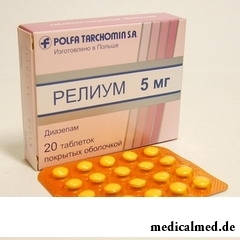 Relium – психолептик, renders somnolent, anticonvulsant, sedative, anxiolytic, myorelaxation action.
Relium – психолептик, renders somnolent, anticonvulsant, sedative, anxiolytic, myorelaxation action.
Form of release and structure
Dosage forms:
- Solution for intravenous (in/in) and intramuscular introduction (in oil): transparent or slightly opalescent liquid, from colourless before chartreuse coloring (on 2 ml in glass colourless ampoules, on 5 ampoules in the pallet, in a cardboard pack of 1, 2 or 10 pallets);
- Tablets, coated (on 20 pieces in the blister, in a cardboard pack 1 blister).
For in/in and introductions in oil contains in 1 ml of solution:
- Active ingredient: diazepam – 5 mg;
- Auxiliary components: sodium benzoate, benzyl alcohol, the benzoic acid, alcohol (ethanol of 96%), propylene glycol, water for injections.
In 1 tablet, coated, contains:
- Active ingredient: diazepam – 5 mg;
- Auxiliary components: twin 80, potato starch, quinolinic yellow (E104), magnesium stearate, lactose, gelatin, talc;
- Structure of a cover: polyethyleneglycol 6000, cellulose acetate phthalate.
Indications to use
- Sleep disorders;
- Conditions of alarm, neurosises, including against the background of oncological pathologies, an arterial hypertension, heart failure, a peptic ulcer of a stomach and a duodenum;
- Epilepsy, epileptic status;
- Spasms of muscles of the central origin;
- Tension of skeletal muscles at posttraumatic states and motive rehabilitation (for the purpose of undervoltage);
- Abstinence at alcoholism;
- Eclampsia;
- Tetanus;
- Pernicious vomiting;
- Premedication in surgical practice and at diagnostic procedures.
Contraindications
- The expressed respiratory insufficiency of various etiology, disorder of breath of the central origin;
- Consciousness disturbance;
- Glaucoma;
- Myasthenia;
- Period of pregnancy and feeding by a breast;
- Depressions with suicide attempts;
- Shock, coma, head injuries;
- Acute intoxication alcohol, narcotic, somnolent, psychotropic drugs;
- Individual intolerance of components of drug.
Besides, it is contraindicated in/in administration of solution at an absentia epileptica or Lennox-Gasto's syndrome, in/in and introduction in oil aged up to 5 weeks of life.
It is impossible to apply tablets at children under 2 years.
With care patients should appoint Relium at a liver and/or renal failure, a cerebral and spinal ataxy, a hyperkinesia, organic diseases of a brain, the psychosis (risk of paradoxical reactions), a hypoproteinemia established or an estimated apnoea during sleep, at advanced age, at the instruction in the anamnesis to epilepsy, epileptic seizures, the dependence phenomena.
Route of administration and dosage
Solution for in/in and introductions in oil
Solution is intended for in oil and in/in jet or drop introduction.
Solution in oil is entered deeply into large muscles.
For in/in jet introductions of 2 ml of drug mix from 8 ml 5% of solution of glucose or normal saline solution, rate of administering – no more than 4 ml 1 minute.
For in/in drop introductions of 20 ml (10 ampoules) of Relium dissolve in 500 ml 5% of solution of glucose or normal saline solution, rate of administering – 40 ml within 60 minutes.
The recommended dosing for in/in or introductions in oil by the adult patient:
- Acute cases of alarm and concern: on 2-5 mg of 1 times a day, for achievement of clinical effect – in the same dose repeatedly in 180-240 minutes;
- Phobic frustration in a severe form: 5-10 mg, if necessary in 180-240 minutes are shown repeated introduction in the same dose;
- Alcoholic abstinence syndrome: 10 mg once, for achievement of clinical effect in 180-240 minutes it is possible to enter 5-10 mg in addition;
- Tetanus, athetosis, muscular spasms: 5-10 mg, are in case of need possible increase in a dose;
- Hard cases of recurrent convulsive attacks, epileptic status: the initial dose – 5-10 mg once, then in 10-15 minutes and 120-240 minutes is allowed repeated introduction, but no more than 30 mg totally;
- Premedication: in/in slowly – 10 mg, in the absence of simultaneous use of narcotic analgetics – to 20 mg, or in oil – 5-10 mg in 30 minutes prior to the procedure.
When using drug in a countershock to the patient in/in enter in 5-10 minutes prior to the procedure 5-10 mg.
Patients from the liver broken functions and/or kidneys need to lower a dose.
At advanced age or at the weakened condition of the patient it is recommended to appoint 1/2 usual doses.
The recommended dosing in pediatrics:
- Tetanus: aged from 5 weeks of life up to 5 years – 1-2 mg, of 5 years are also more senior – 5-10 mg; the drug is administered in oil or slowly in/in, for achievement of desirable effect perhaps repeated introduction in 180-240 minutes;
- Epileptic status, heavy recurrent convulsive attacks: under control of respiratory function in/in slowly – to babies from 5 weeks of life to 5 years (with a speed of 0,2-0,5 mg within 2-5 minutes) – no more than 5 mg, of 5 years are also more senior (with rate of administering of 1 mg within 2-5 minutes) – no more than 10 mg. For achievement of clinical effect the procedure is repeated in 120-240 minutes.
Tablets, coated
Pill is taken inside.
The dose and the period of use are appointed by the doctor on the basis of clinical indications.
The recommended dosing for adults:
- Sleeplessness: quickly on 5-10 mg in 30 minutes prior to a dream;
- Alcoholic abstinence syndrome: on 10 mg 3 times a day, the maximum daily dose – 60 mg;
- Spastic conditions of muscles: on 5 mg 1-3 times a day, if necessary it is possible to increase a daily dose to 60 mg.
The recommended daily dosing for children:
- 2-3 years: 2-5 mg;
- 4-7 years: 4-6 mg;
- 8-18 years: 5-8 mg.
The daily dose for children in proportion is divided into 2-3 receptions.
Side effects
- Nervous system: at the beginning of use (especially at patients at advanced age) – slackness, increased fatigue, obtusion of emotions, disturbance of concentration of attention, delay of motor and mental reactions, antegrade amnesia; headache, drowsiness, dizziness, confusion of consciousness, reaction delay, ataxy, disorientation; seldom – depression of mood, euphoria, catalepsy, the uncontrollable movements of a body and an eye, a dysarthtia, a hyporeflexia; paradoxical reactions – aggression flashes, fear, psychomotor excitement, a muscular spasm, suicide bent, hallucinations, confusion of consciousness, acute excitement, uneasiness, sleeplessness, irritability, a depression;
- Cardiovascular system: lowering of arterial pressure, heartbeat, tachycardia;
- Bodies of a hemopoiesis: anemia, neutropenia, leukopenia, thrombocytopenia, agranulocytosis (weakness, hyperthermia, fever, pharyngalgia, feeling of fatigue);
- Alimentary system: heartburn, dryness in a mouth, vomiting, a hiccups, a gastralgia, anorexia, increase in activity of liver enzymes, abnormal liver functions, jaundice;
- Allergic reactions: very seldom – a skin itch, rash, a small tortoiseshell, anaphylactic reactions;
- Urinogenital system: disturbances libido, dysmenorrhea, renal failure;
- Influence on a fruit: oppression of the central nervous system, teratogenecity (especially in the I trimester of pregnancy), breath disturbance, disturbance of a sucking reflex;
- At use in obstetrics: hypothermia, muscular hypotension, диспноэ;
- Others: medicinal dependence, accustoming; seldom – dysfunction of external respiration, oppression of a respiratory center, weight reduction of a body, disturbance of clearness of sight, a diplopia, bulimia; against the background of a sharp dose decline or drug withdrawal – a withdrawal; at bystry in introduction – respiratory depression and blood circulations;
- Local reactions: (at introduction in oil) sometimes – phlebitis; often – pain, an erythema in the place of an injection.
Special instructions
At organic changes of a brain (it is recommended to avoid parenteral administration), respiratory and heart failure, a myasthenia, closed-angle glaucoma or predisposition to it should apply diazepam with extra care.
Under observation of the doctor, especially at the beginning of therapy, it is necessary to appoint drug against the background of prolonged use of beta adrenoblockers, anti-hypertensive central acting agents, anticoagulants, cardiac glycosides.
The gradual dose decline at Relium cancellation as the sudden termination can cause excitement, concern, spasms, a tremor is required.
Alcohol intake during treatment is categorically contraindicated.
At emergence of paradoxical reactions diazepam should be cancelled.
At administration of drug in oil increase in activity of a kreatinfosfokinaza in a blood plasma is possible.
Intra arterial introduction is not allowed.
For treatment it is necessary to refuse control of vehicles and mechanisms.
Medicinal interaction
At simultaneous use of Relium:
- Neuroleptics, opioid analgetics, sedative and hypnagogues, drugs for an anesthesia and other drugs oppressing the central nervous system (CNS) – strengthen the oppressing influence on a respiratory center and TsNS, promote emergence of the expressed arterial hypotension;
- Muscle relaxants – strengthen the action, increasing risk of developing of an apnoea;
- Tricyclic antidepressants (including amitriptyline) – increase cholinergic effect, the oppressing influence on TsNS, level of concentration of antidepressants;
- Oral contraceptives – activity of diazepam increases, the risk of development of breakthrough bleedings increases;
- Caffeine – reduces sedative, anxiolytic effect of diazepam;
- Antiepileptic means (Phenytoinum, carbamazepine) and other drugs causing induction of enzymes of a liver – accelerate diazepam removal;
- Clozapine – promotes development the expressed arterial hypotension, a loss of consciousness, respiratory depression;
- Metoprolol – risk of deterioration in psychomotor reactions, decrease in visual acuity;
- The levodopa – can lose protivoparkinsonichesky action;
- Lity a carbonate – coma development is possible;
- Risperidon – risk of development of a malignant antipsychotic syndrome;
- Paracetamol – reduces excretion of diazepam and its metabolite;
- Rifampicin – strengthens metabolism of diazepam and accelerates its removal;
- Theophylline – breaks drug sedation;
- Cimetidinum, Disulfiramum, омепразол – can increase intensity and duration of effect of diazepam;
- Fluvoksamin – promotes increase in level of concentration of diazepam in a blood plasma and to development of the undesirable phenomena;
- Phenytoinum, phenobarbital – can cause diazepam metabolism acceleration;
- Bupivacaine – increases the contents in a blood plasma;
- Diclofenac – causes strengthening of dizziness;
- The isoniazid – slows down removal of diazepam from an organism;
- Ethanol, etanolsoderzhashchy drugs – strengthen the oppressing action on a respiratory center and TsNS in general, increase risk of emergence of a syndrome of pathological intoxication.
Drug oppresses metabolism of Phenytoinum and strengthens its action.
The mechanism and extent of medicinal interaction at reception of Relium against the background of long preliminary therapy by beta adrenoblockers, anti-hypertensive central acting agents, anticoagulants, cardiac glycosides are unpredictable.
Terms and storage conditions
To store in the unavailable to children, protected from light place at a temperature up to 25 °C, to protect tablets from moisture.
Period of validity – 3 years.
The person accepting antidepressants in most cases will have a depression again. If the person coped with depression by own efforts, he has every chance forever to forget about this state.

The main role in development of a peptic ulcer of a stomach and duodenum the bacterium Helikobakter plays pilor. Activity and Wuxi...
Section: Articles about health
Feeding by a breast - the integral part of ideal motherhood allowing to come into contact with the kid and to create to it healthy immunity since early years. Nevertheless, this important process in life of mother and child can be saddened laktostazy − by a delay of milts...
Section: Articles about health
Each failure in work of bodies and systems of a human body is, as a rule, shown by the whole complex of symptoms. In particular, malfunctions with health often cause emergence of cosmetic defects in the form of rashes on a face. Experienced doctors know that localization of heat-spots usually depends on what disease the patient has....
Section: Articles about health
Not everyone can brag of the shining Hollywood smile. Even at the person who is regularly visiting the stomatologist and watching з...
Section: Articles about health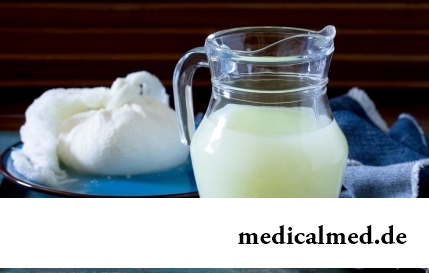
Milk and products of its processing by right occupy one of the main places in a diet of the modern person. They contain proteins, necessary for normal life activity, fats, vitamins and microelements, and are an important part of various medical diets....
Section: Articles about health
Diseases of joints often begin imperceptibly for the person. The first stages of destruction of the cartilaginous tissue providing soft and free sliding of heads of bones in joint bags proceed slowly and absolutely without serious consequences. Especially unpleasantly for the fact that this process is not connected with advanced age: degradation of joint surfaces is, as a rule, noticeable after 30 years. It means that practically each able-bodied person at any time can face sad results...
Section: Articles about health
Small appetite at the child – the complaint which pediatricians should hear practically from each mother. Most often it is carried to разр...
Section: Articles about health
Reactive pancreatitis - the disease which is characterized by inflammatory process in a pancreas which arises most often because of excess activity of digestive enzymes. It − the emergency state which treatment has to take place in хирургич...
Section: Articles about health
Several decades ago the basil (the district khan, реан, Reagan) was considered as a part of the Caucasian or east cuisine, but today it strongly took the place on tables of Russians. Greens of this plant possess a strong, pleasant smell and specific fresh taste because of which it is included almost in all dry mixes of spicy herbs, and also give to meat and fresh fish dishes....
Section: Articles about health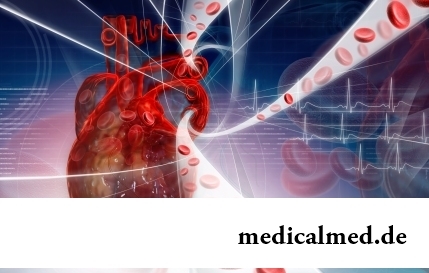
The state of health of the person in many respects depends on chemical composition of biological liquids of an organism. Specialists consider that з...
Section: Articles about health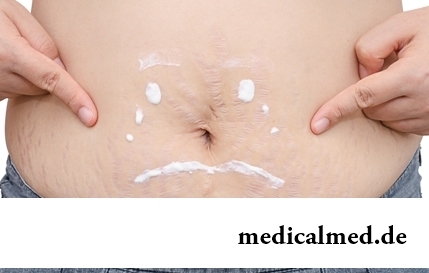
Striya (extension) are the defects of skin having an appearance of direct or wavy strips from 1 to 10 cm long and 1-5 mm wide. In most cases at women of a striya are located on a stomach, hips, a breast or buttocks. At athletes they can appear on shoulders and внутренн...
Section: Articles about health
Statistically cystitis 25-30% of women up to 40 years have. With age this indicator raises, besides many do not get to statistics because do not see a doctor. The most sad that after the regular visits to doctors, long reception of antibiotics and life in the mode "it is necessary to take care" cystitis all the same is returned to a half of women. Symptoms of cystitis are unambiguous and it is impossible to confuse them with anything: bladder pain, burning at an urination, frequent desires to go to a toilet, a vynuzhd...
Section: Articles about health
Separate food - the system of meal based on digestion physiology which is carried to improvement methods. In opinion д...
Section: Articles about health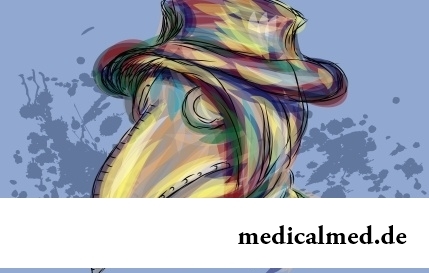
History of mankind contains several tens of epidemics whose emergence was compared by eyewitnesses and historians to doomsday. The most terrible of them claimed the lives of millions of people, having made even the whole people to the person of the earth. What they − the diseases striking terror? Daringly...
Section: Articles about health
Doctors claim that the people not so familiar with a dorsodynia occur among adult Russians very seldom. At the same time the vast majority of the patients who are periodically testing this indisposition do not hurry to ask for medical care at all. On the one hand, there is an opinion that feelings of this sort at mature age are nearly natural phenomenon which is not doing serious harm to health. With another – practice of self-treatment various obezbol is eurysynusic...
Section: Articles about health
One of the major chemical processes happening in a human body are oxidation reactions. They go with participation of fats...
Section: Articles about health
The body of the person almost for 60% consists of water. It is so important for normal functioning of an organism that loss of only one and a half percent of liquid already leads to the most unpleasant effects. The problems connected with deficit of water can overtake and...
Section: Articles about health
The popular expression "run from a heart attack" became the motto of the people supporting active lifestyle. Moreover, run became a peculiar fashionable tendency: sales of racetracks and the accompanying goods for run are at permanently high level. Whether really it is possible for one and all people and it is necessary to run to receive the portion of health, a charge of cheerfulness and good mood?...
Section: Articles about health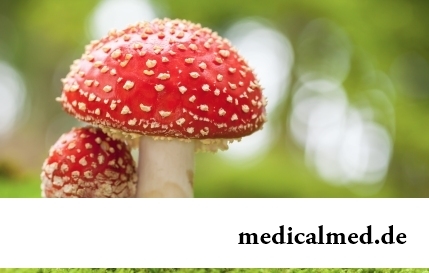
Mushrooms - the surprising inhabitants of our planet having a set of wonderful qualities. Thanks to one of them, a mold mushroom of Penici...
Section: Articles about health
Deciding to get rid of an addiction, not all imagine what effects it is necessary to face. Process of refusal of smoking causes quite essential discomfort in most of people: differences of mood, sleep disorder, fatigue, decrease физич...
Section: Articles about health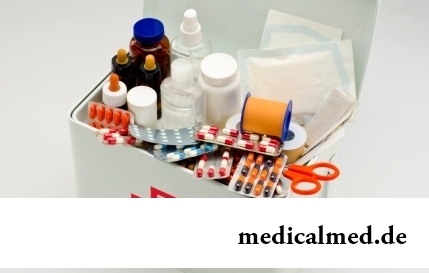
All know that self-treatment is dangerous. However absolutely it is almost impossible to do without it. Rate of modern life does not allow to handle each small trouble to the doctor and information on ways of independent delivery of health care is quite available. Means, all of us have only one: to learn to give this help competently and in those limits in which it is possible for the person who does not have vocational education....
Section: Articles about health
Physical activity is necessary for normal functioning of a human body. At a lack of the movement cease функц...
Section: Articles about health
All diseases from nerves – in this joke a big element of truth, are said by doctors. Constant stresses lead to decrease in protective forces of an organism, and it becomes vulnerable for a set of diseases. It is wrong to think that the stress is a problem of the present. Life of people and hundred...
Section: Articles about health
Life of the modern woman is very difficult. Opportunities to realize itself are wide: it not only education and career, but also the most various hobbies from sport before needlework. It is not less important to build private life, paying an attention maximum to children, the husband, parents, friends. For all these affairs there is catastrophically not enough time therefore each of us tries to cut down as far as possible its expenses on necessary, but not the most fascinating housework. With it we are successfully helped by means...
Section: Articles about health
Summer in the heat. Many are going to spend vacation abroad. Travelers the tender seas, rest on beaches wait, for survey достоп...
Section: Articles about health
Stroke (acute disorder of cerebral circulation) – one of the most widespread neurologic diseases. Annually in the world more than 6 million people die of this illness. From the survived patients about 80% become disabled people, and nearly a thirds from them впо...
Section: Articles about health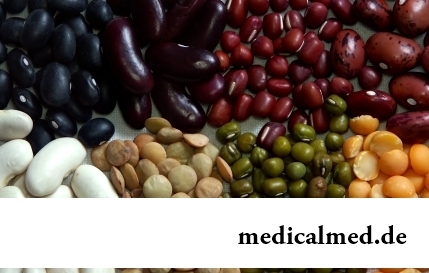
Ability of an organism to resist to adverse environmental factors (to impact of temperature drops, humidity and pressure, to the attacks of causative organisms, etc.) directly depends on what the person eats. Business here not only in that cells of a body received a necessary set of nutrients, vitamins and microelements. Scientists established that such components which are capable to influence negatively immune system, in connection with also are a part of foodstuff...
Section: Articles about health
